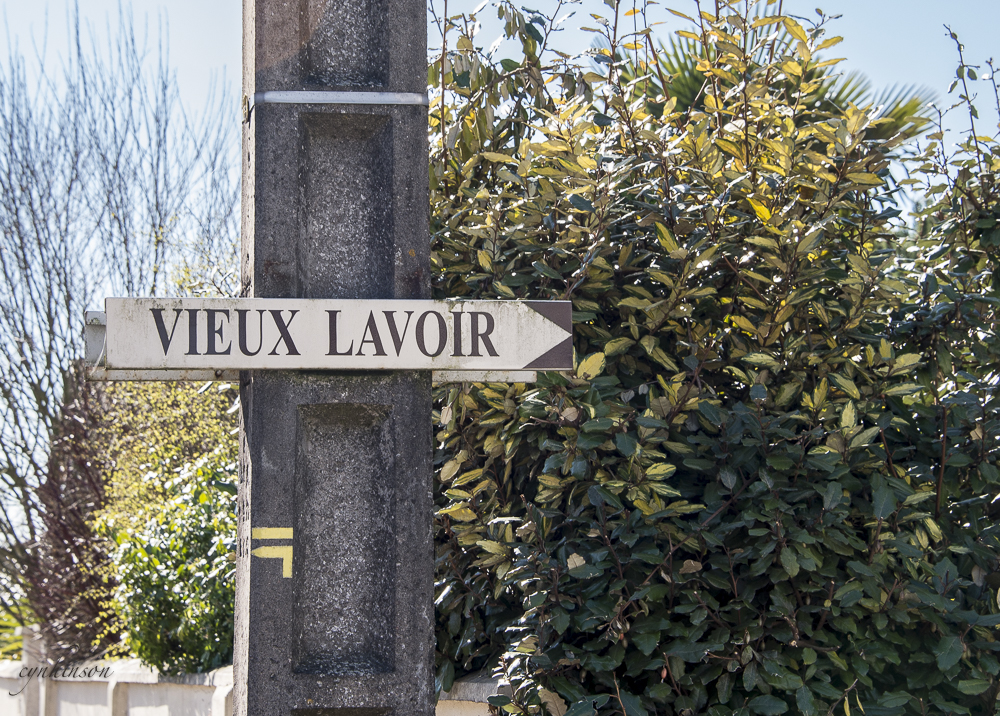I seem to spend a lot of time writing about religious architecture, but churches and abbeys
aren’t the only interesting buildings here in France. In fact, it’s the small, often-overlooked structures that intrigue me the most. Take for instance, lavoirs,
those communal buildings where women gathered every week to do the family laundry. They're no longer used, yet it seems like every French village still has one, and a surprisingly large number of these wash houses have been preserved and restored.
 |
| "Old lavoirs" aren't always this clearly marked. |
 |
| Above, two lavoirs in Chartres |
Communal washing places have always been a part of village
life, but the spread of lavoirs in France can be precisely dated to February 3, 1851, when a law was passed providing a 30% tax credit for the construction of wash houses. Lavoirs come in many different styles, are of all sizes and shapes, and are usually built of wood or stone. The most common
type is an elongated shed located directly on a river bank, like the lavoirs in Chartres. The second type, often located in the heart of a village, is a free-standing, spring-fed basin, usually covered by a roof.
 |
| This 18th century lavoir, now in Parc Saint Albe, was relocated from a nearby chateau, now demolished |
 |
| Spring-fed lavoir near Angers |
 |
| Restored lavoir in Garein |
One of the largest and loveliest lavoirs that I've ever seen is in Bourg, about 20 miles north of Bordeaux. Built in 1828 of the local limestone, the building was dubbed "The Chamber of Representatives" by the men of the town, because of the constant chatter and discussion that went on while the women worked.
 |
| Bourg lavoir |
I'm not sure I completely understand how
clothes were laundered in the past, but the process seems to have gone
something like this -- first, the laundry was hauled to the washing house where each item was unpacked and presoaked. Then each article of family clothing and every sheet, towel and rag was hand scrubbed with a
brush to remove the dirt and stains. To ensure that things got really clean, the laundry was then
covered with ashes and boiled in big metal vats. (This would be similar to using lye soap, which
is a caustic combination of ashes and rendered animal fat.) Then the items were rinsed and beaten
on a flat wooden board with a paddle to remove the last of the soapy
water. After one final rinse, the laundry was wrung out and hung up to dry.
 |
| Two basins, the larger for washing, the smaller for rinsing |
 |
| Wooden planks for scrubbing I'm not entirely certain how this lavoir functioned. Gears (below) lowered the wooden platform into the stream, perhaps for rinsing? |
 |
| Gears for lowering the flat planks into the water |
We've been in France for just about two years now, and there's not a day goes by that I don't curse my french lave-linge. It's so small that I can't wash more than two towels and a dishcloth at a time. And each load takes 2 hours and 13 minutes to complete. But after watching that video I realize just how much things have improved. Doing laundry in France nowadays may take a lot of time, but at least I don't have to pound anything with a paddle.
PS. One of my favorite french singers, Charles Trenet, recorded the following song - Le Bateau Lavoir - about a laundry boat by day, turned discotheque at night. Sing along if you know the words...




I thoroughly enjoyed your exploration of 'Les Lavoirs' in France! It's fascinating how these overlooked structures, once buzzing with communal life, are now preserved pieces of history. Your perspective on the lesser-known aspects of French architecture brings a refreshing depth to your blog. Looking forward to more hidden gems!
ReplyDeletePlease keep me update @
Name :- Fake Tan Dubai
Website:- https://plushtan.ae/